7 Underrated Medieval Villages in Italy You'll Love

7 Underrated Medieval Villages in Italy You'll Love
Italy's famous cities like Rome, Florence, and Venice rightfully draw millions of visitors each year. However, the soul of Italy often resides in its smaller, lesser-known medieval villages where time seems to stand still. These hidden gems offer authentic Italian experiences without the crowds, allowing you to discover stunning architecture, savor local cuisine, and connect with centuries of history and tradition. Join us as we explore seven of Italy's most enchanting underrated villages that deserve a spot on your travel itinerary.

1. Civita di Bagnoregio: The Dying City
Perched dramatically atop a crumbling volcanic plateau in northern Lazio, Civita di Bagnoregio presents one of Italy's most extraordinary sights. This village, accessible only by a long pedestrian bridge, earns its nickname "The Dying City" due to the ongoing erosion that threatens its existence. Despite this—or perhaps because of it—the village possesses an otherworldly beauty that captivates visitors.
What Makes It Special
- Dramatic Setting: The village seems to float above the surrounding valleys, creating a surreal landscape that photographers dream about
- Ancient Architecture: Etruscan in origin with medieval and Renaissance elements blended throughout
- Peaceful Atmosphere: With only a handful of permanent residents, Civita offers tranquility rarely found in Italian destinations
- Living History: Walking the cobblestone streets feels like traveling back in time, with buildings dating back to the Middle Ages
Local Experiences
Don't miss the opportunity to dine at one of the small family-run restaurants serving hyperlocal specialties like fettuccine with porcini mushrooms or wild boar ragù. The Geological Museum offers fascinating insights into the village's precarious position and ongoing conservation efforts.
Getting There
Civita di Bagnoregio is located about 120 km (75 miles) north of Rome. The most convenient way to reach it is by car, though buses run from nearby Orvieto, which is accessible by train from Rome. Plan to spend at least half a day exploring the village, though staying overnight offers a magical experience once the day visitors leave.
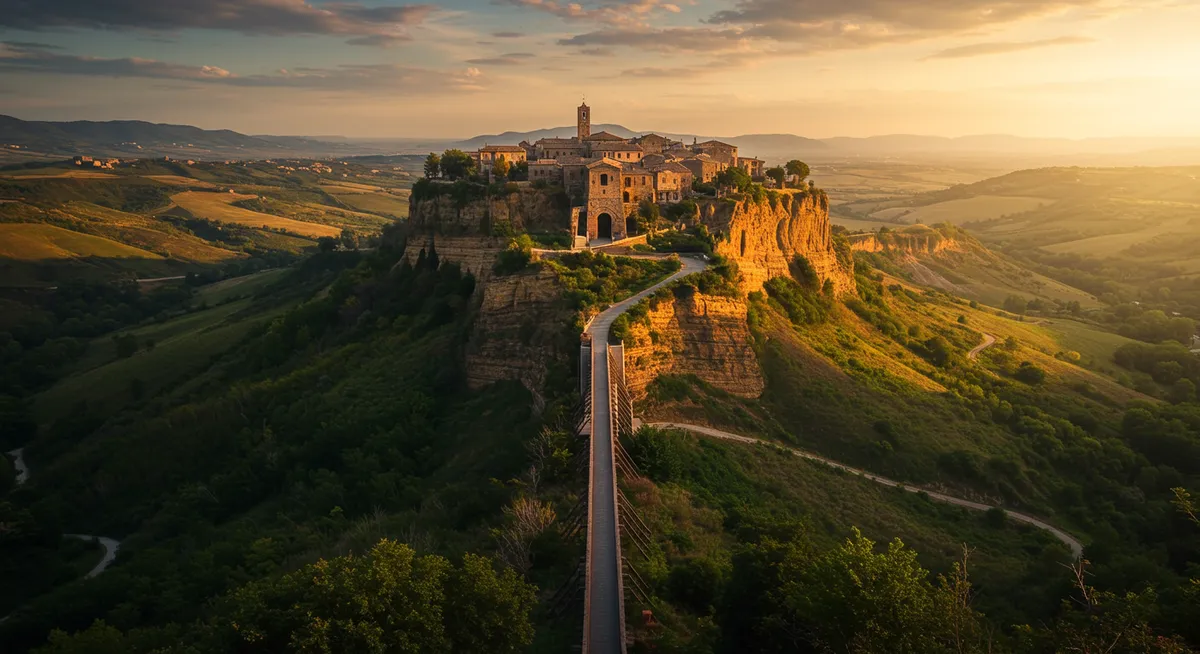
2. Dozza: The Village of Murals
Nestled in the hills of Emilia-Romagna between Bologna and Imola, Dozza transforms the concept of an art gallery. Instead of housing paintings within museum walls, the entire village serves as a canvas, with colorful murals adorning the façades of houses, shops, and public spaces. Every two years, the "Biennale del Muro Dipinto" festival brings artists from around the world to add new works to this open-air gallery.
What Makes It Special
- Living Art Gallery: Over 100 murals transform ordinary buildings into extraordinary works of art
- Medieval Fortress: The imposing Rocca Sforzesca (Sforza Fortress) dominates the village and houses a regional wine center
- Wine Excellence: The fortress cellar, Enoteca Regionale, showcases hundreds of wines from throughout Emilia-Romagna
- Photogenic Streets: Every corner offers a perfect photo opportunity with colorful artwork against medieval architecture
Local Experiences
Visit the Enoteca Regionale in the fortress cellar to sample and purchase wines from throughout the region. Wander the streets with a village map identifying each mural and its artist. For food lovers, several small restaurants serve traditional Emilia-Romagna cuisine, known as some of Italy's finest.
Getting There
Dozza is located about 30 km (19 miles) southeast of Bologna. It's easily accessible by car, or you can take a train to Imola and then a short taxi ride to the village. While you can see the highlights in a few hours, art lovers might want to spend a full day exploring the murals and fortress.
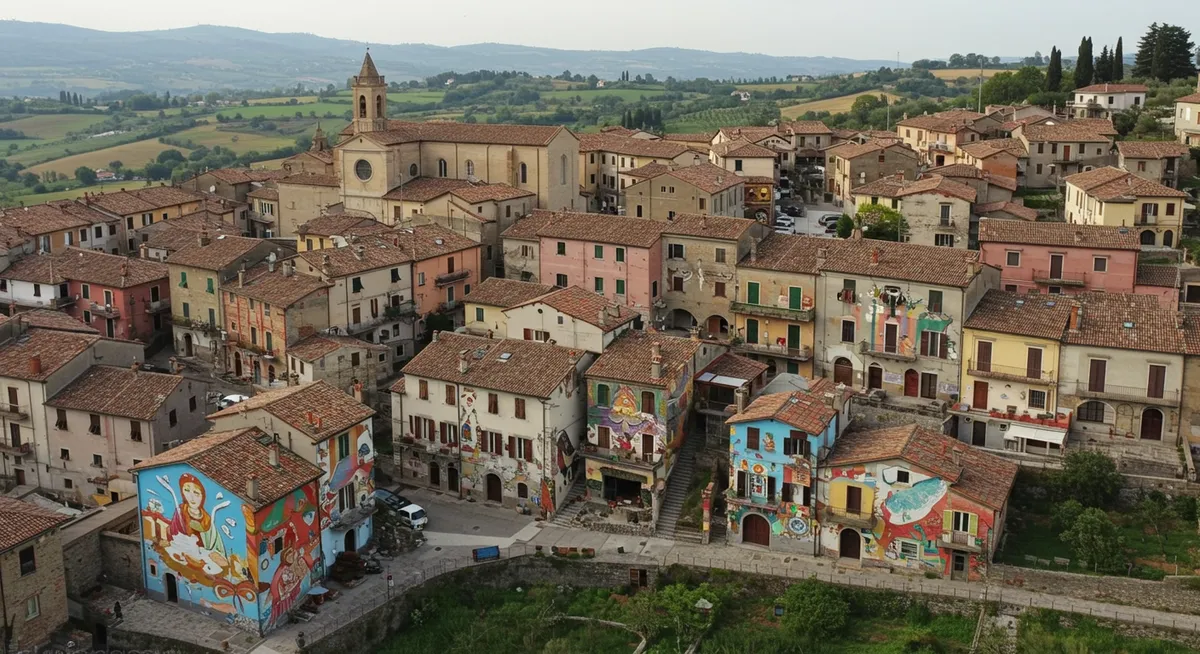
3. Sant'Agata de' Goti: Campania's Hidden Jewel
While tourists flock to the Amalfi Coast, those in the know head to Sant'Agata de' Goti, a spectacular medieval town perched on a tufa ridge in Campania. With its perfectly preserved medieval center, dramatic setting above a ravine, and proximity to some of Italy's finest wine country, this village offers an authentic glimpse into southern Italian life away from mass tourism.
What Makes It Special
- Dramatic Location: Built on a tufa plateau surrounded by deep ravines, creating a natural fortress
- Perfectly Preserved: The historic center remains largely unchanged since medieval times
- Viticultural Excellence: Surrounded by vineyards producing the prestigious Falanghina and Aglianico wines
- Authentic Atmosphere: Unlike many tourist-oriented villages, Sant'Agata remains primarily a place where locals live and work
Local Experiences
Explore the 11th-century Duomo (cathedral) with its stunning marble work. Visit local wineries in the surrounding countryside for tastings of Campania's exceptional wines. Dine at family-run trattorias serving southern Italian specialties like pasta with wild rabbit ragù or local cheeses with honey.
Getting There
Sant'Agata de' Goti is located about 35 km (22 miles) northeast of Naples. It's best reached by car, though buses connect it to nearby Caserta, which has train connections to Naples. The village is perfect for a day trip from Naples or as part of a broader exploration of Campania's interior.
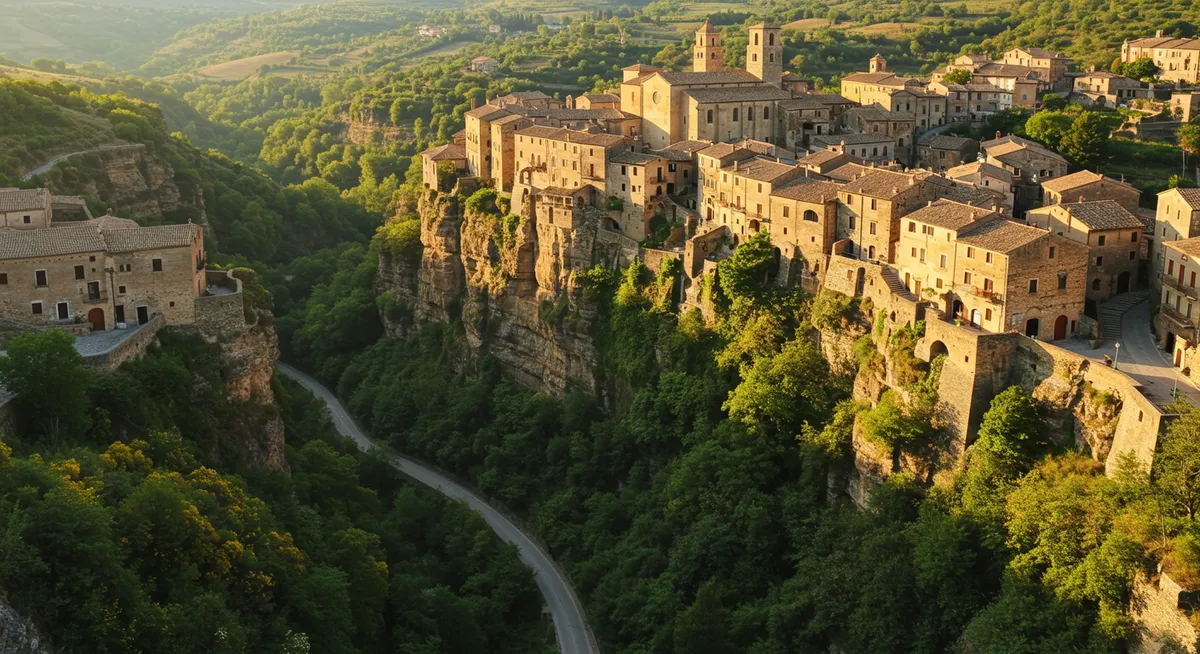
4. Calcata: Italy's Bohemian Village
Just 50 kilometers north of Rome lies Calcata, perhaps Italy's most unusual medieval village. After being abandoned in the 1930s when it was declared unsafe due to erosion, the empty medieval buildings were discovered by artists, writers, and bohemians in the 1960s and 70s. Today, this revived village is a thriving artistic community with an eclectic, almost mystical atmosphere that stands in stark contrast to most traditional Italian towns.
What Makes It Special
- Artist Colony: Studios, galleries, and craft shops fill the ancient stone buildings
- Dramatic Setting: Perched atop a volcanic outcrop surrounded by the green Treja Valley
- Eclectic Community: A diverse mix of Italian and international artists and free spirits
- Pagan and Christian History: Once home to unusual relics and with roots in both Christian and pagan traditions
Local Experiences
Wander the narrow streets discovering artisan workshops and galleries selling unique handcrafted items. Visit on weekends when cafés often host impromptu music performances. Hike the beautiful trails in the surrounding Treja Valley Nature Reserve. Enjoy vegetarian-friendly cuisine that reflects the village's bohemian character.
Getting There
Calcata is approximately 50 km (31 miles) north of Rome. While having a car provides the most flexibility, public buses run from Rome's Saxa Rubra station. The village is small enough to explore in a few hours, but its unique atmosphere might entice you to stay longer.
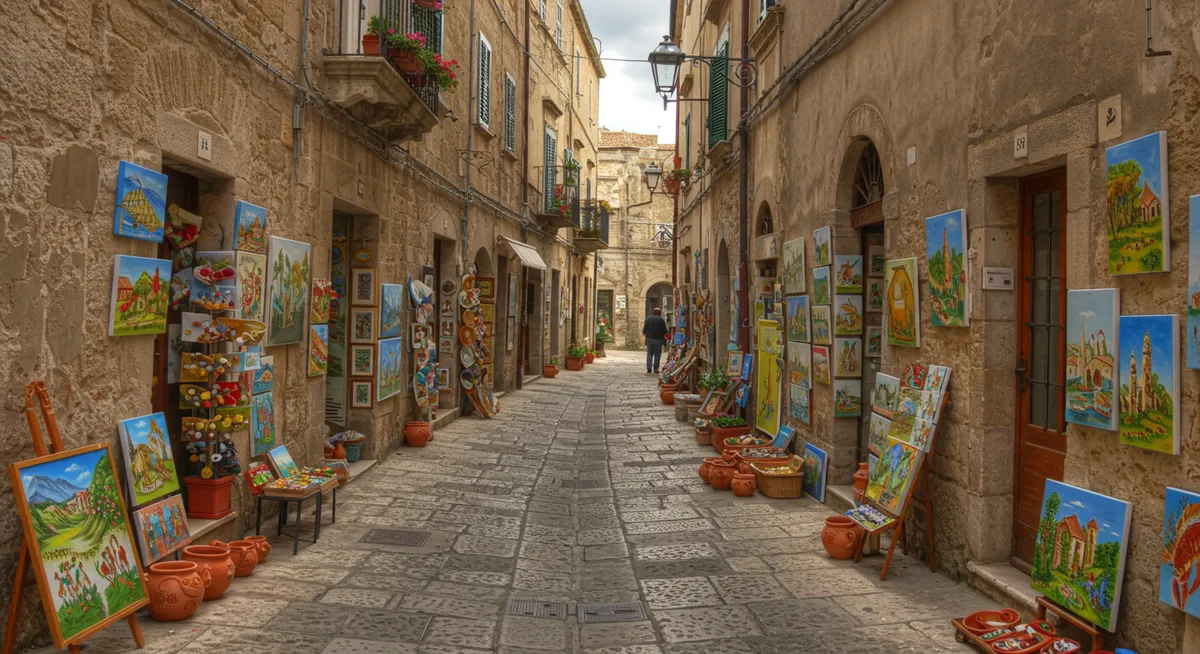
5. Brisighella: Romagna's Medieval Gem
Nestled in the rolling hills of Romagna, Brisighella presents a picture-perfect medieval townscape dominated by three distinctive landmarks: La Rocca (a 14th-century fortress), Torre dell'Orologio (a clock tower), and Il Monticino (a sanctuary). Beyond its architectural beauty, this village is renowned for its exceptional olive oil, terracotta craftsmanship, and the unique Via degli Asini (Street of Donkeys)—an elevated covered passageway with arched windows.
What Makes It Special
- Triadic Skyline: The fortress, clock tower, and sanctuary create a distinctive silhouette visible for miles
- Via degli Asini: A unique elevated covered street with staggered arched windows, once used by donkeys transporting gypsum from nearby quarries
- Culinary Excellence: Producer of some of Italy's finest olive oil (Brisighello DOP) and home to exceptional local cuisine
- Thermal Spas: Natural thermal waters have attracted visitors since Roman times
Local Experiences
Attend an olive oil tasting to sample the region's liquid gold. Hike up to all three hilltop monuments for panoramic views of the countryside. Dine on local specialties like passatelli (bread crumb pasta) with seasonal vegetables or cappelletti (stuffed pasta) with rich meat broth. Visit the thermal spas for a relaxing soak in the mineral-rich waters.
Getting There
Brisighella is located about 25 km (15 miles) southwest of Faenza in Emilia-Romagna. It's accessible by regional train from Bologna (with a change in Faenza) or by car. The village merits at least a half-day visit, though food enthusiasts might want to stay longer to explore the culinary offerings.
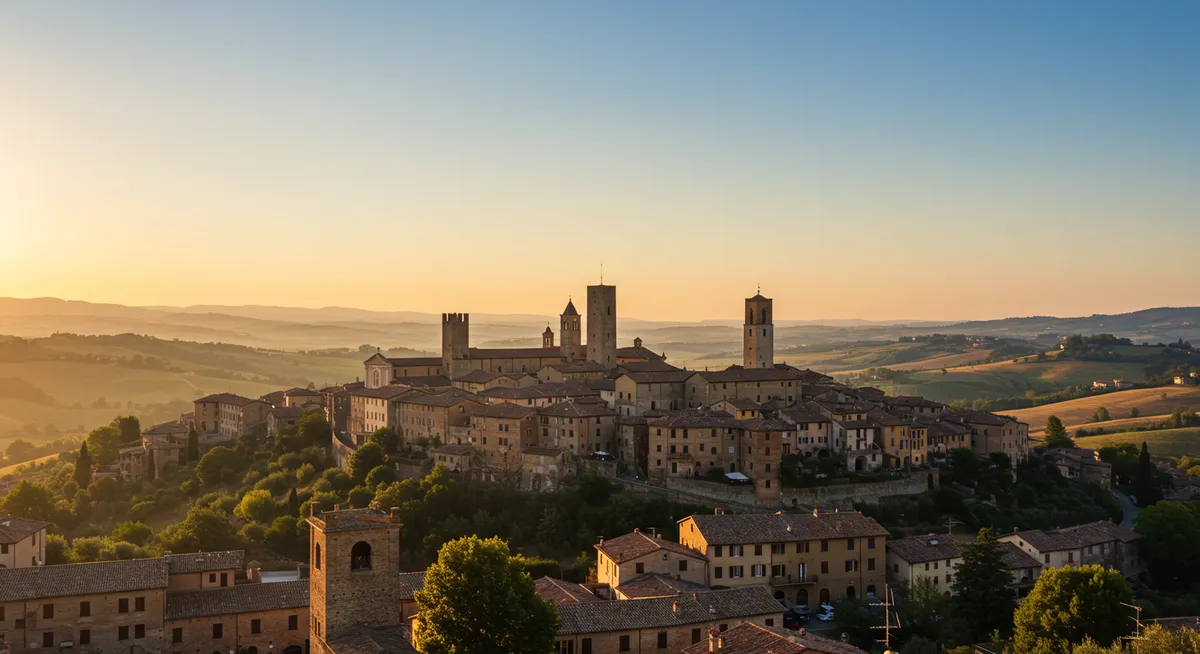
6. Pitigliano: Little Jerusalem
Rising dramatically from a tufa ridge in southern Tuscany, Pitigliano presents one of Italy's most breathtaking village vistas. Known as "Little Jerusalem" due to its historic Jewish community dating back to the 16th century, this town offers a fascinating blend of Etruscan, medieval, and Renaissance influences. The golden-hued buildings seem to emerge directly from the volcanic cliff, creating an unforgettable silhouette against the sky.
What Makes It Special
- Jewish Heritage: A beautifully restored synagogue and museum in the former Jewish quarter
- Etruscan Roots: Ancient cave dwellings, tombs, and pathways carved into the tufa rock
- Wine Tradition: White wine cellars carved directly into the soft volcanic stone
- Spectacular Views: Panoramic vistas of the surrounding valleys and countryside
Local Experiences
Visit the restored synagogue and Jewish museum to learn about the community that thrived here for centuries. Explore the "vie cave"—mysterious Etruscan pathways carved deep into the tufa rock surrounding the town. Sample the local Bianco di Pitigliano wine in cellars carved into the volcanic stone. Try Jewish-influenced local specialties like "sfratti" (stick-shaped cookies filled with honey and nuts).
Getting There
Pitigliano is located in southern Tuscany, about 150 km (93 miles) northwest of Rome. It's best reached by car, as public transportation options are limited. The village deserves at least a full day to explore, and makes an excellent base for discovering other tufa towns in the region like Sorano and Sovana.
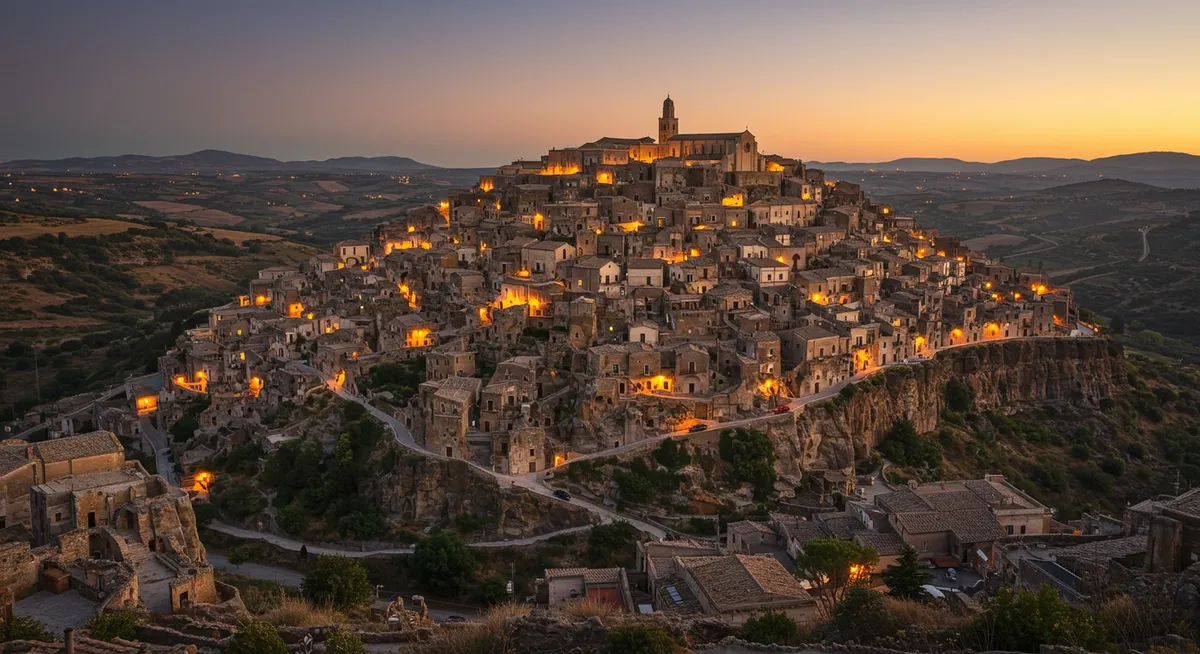
7. Tellaro: The Ligurian Secret
While crowds flock to the famous Cinque Terre villages, in-the-know travelers head to Tellaro, a peaceful fishing hamlet on the Gulf of Poets in eastern Liguria. This tiny gem offers all the maritime charm of its more famous neighbors—colorful houses tumbling down to a picturesque harbor, crystalline waters, and narrow caruggi (alleyways)—but with a tranquil atmosphere that recalls a more authentic Italy.
What Makes It Special
- Poetic History: Part of the "Gulf of Poets" that inspired writers like Byron and Shelley
- Colorful Architecture: Pastel-hued houses clustered around a small harbor
- Legendary Octopus: Local folklore tells of an octopus that saved the village from pirate attack by ringing the church bells
- Pristine Waters: Crystal-clear swimming spots and hidden coves accessible from the village
Local Experiences
Swim in the clear waters of the small stone beach or dive from the rocks surrounding the village. Dine on fresh seafood at simple restaurants overlooking the harbor—the anchovies and mussels are particularly exceptional. Hike along the scenic coastal paths connecting Tellaro to neighboring villages. Visit the Church of San Giorgio, perched dramatically at the edge of the sea.
Getting There
Tellaro is located on the eastern end of the Gulf of La Spezia in Liguria, about 7 km (4 miles) south of Lerici. While having a car gives you more flexibility, buses connect Tellaro to Lerici, which has further connections to La Spezia (with train service to major cities). Parking is limited, so visiting in the off-season or arriving early is recommended.

Travel Tips for Visiting Italy's Hidden Gem Villages
To make the most of your experience exploring these underrated treasures, keep these practical tips in mind:
Best Time to Visit
Spring (April-June) and early autumn (September-October) offer the perfect balance of pleasant weather, fewer tourists, and lively local atmosphere. Many villages host festivals during these shoulder seasons, providing unique cultural experiences. Summer is beautiful but can be hot and attracts more visitors, while winter offers a peaceful experience but with reduced hours for attractions and restaurants.
Transportation Considerations
While having a car provides the most flexibility for exploring these off-the-beaten-path locations, some villages have limited or expensive parking. Research options in advance and consider staying in a nearby larger town, using public transportation when practical. For villages with particularly restricted access, look for parking lots at the village entrance with short walks into the center.
Accommodation Options
For an authentic experience, consider staying in an agriturismo (farm stay) near the villages, offering home-cooked meals and insights into rural Italian life. Small family-run hotels and B&Bs within the villages provide charming, personal experiences, though they may have limited amenities compared to larger city hotels. Book in advance, especially for weekend stays, as accommodation options in small villages are often limited.
Dining Etiquette
In these authentic villages, restaurant schedules follow traditional Italian patterns: lunch from 12:30-2:30 PM and dinner from 7:30-10:00 PM. Making reservations is advisable, especially for dinner. Don't rush your meal—dining is a leisurely experience meant to be savored. When possible, try the local specialties and wines specific to the region you're visiting.
Pro Tip: Many of these villages have limited ATM access, so bring enough cash for small purchases, especially in family-run establishments that might not accept credit cards.
Connecting Your Italian Village Experience
These seven villages represent just a sampling of Italy's hidden treasures. You might consider creating an itinerary connecting several of these destinations:
Tuscan Hidden Gems Route (4-5 days)
Start in Pitigliano to explore its fascinating Jewish heritage and dramatic setting, then visit nearby Sorano and Sovana (other tufa towns not covered in this guide but equally charming). From there, head north to explore hidden gems in Tuscany's interior. This route offers an alternative view of Tuscany beyond the familiar postcard images of Val d'Orcia and Chianti.
Medieval Emilia-Romagna Circuit (3-4 days)
Begin in Dozza to marvel at the village's extraordinary murals and sample excellent wines at the enoteca. Continue to Brisighella to experience its unique Via degli Asini and dramatic three-peaked skyline. This circuit showcases the less-explored treasures of a region more famous for its culinary capitals like Bologna and Modena.
Southern Italy's Secret Gems (4-5 days)
Start with Sant'Agata de' Goti in Campania to experience its perfectly preserved medieval center, then explore other hidden villages in Southern Italy like Acerenza in Basilicata or Otranto in Puglia. This route offers insights into the authentic culture of Italy's south, away from more touristy destinations like the Amalfi Coast.
Alternative Central Italy (3-4 days)
Begin at Civita di Bagnoregio and marvel at its extraordinary setting, then visit Calcata for a completely different vibe with its bohemian atmosphere. Both are accessible from Rome but offer experiences worlds away from the capital's tourist crowds.
Travel Tip: For any of these circuits, consider basing yourself in a larger town with good transportation connections and taking day trips, or rent a car for maximum flexibility in reaching these hidden gems.
Related Hidden Gem Towns Around Europe
If you enjoy discovering Italy's medieval villages, you might also appreciate these similar destinations in neighboring countries:

Off-the-Beaten-Path Villages in Southern France
Discover the authentic charm of Provence and beyond in villages that share architectural similarities with their Italian neighbors.
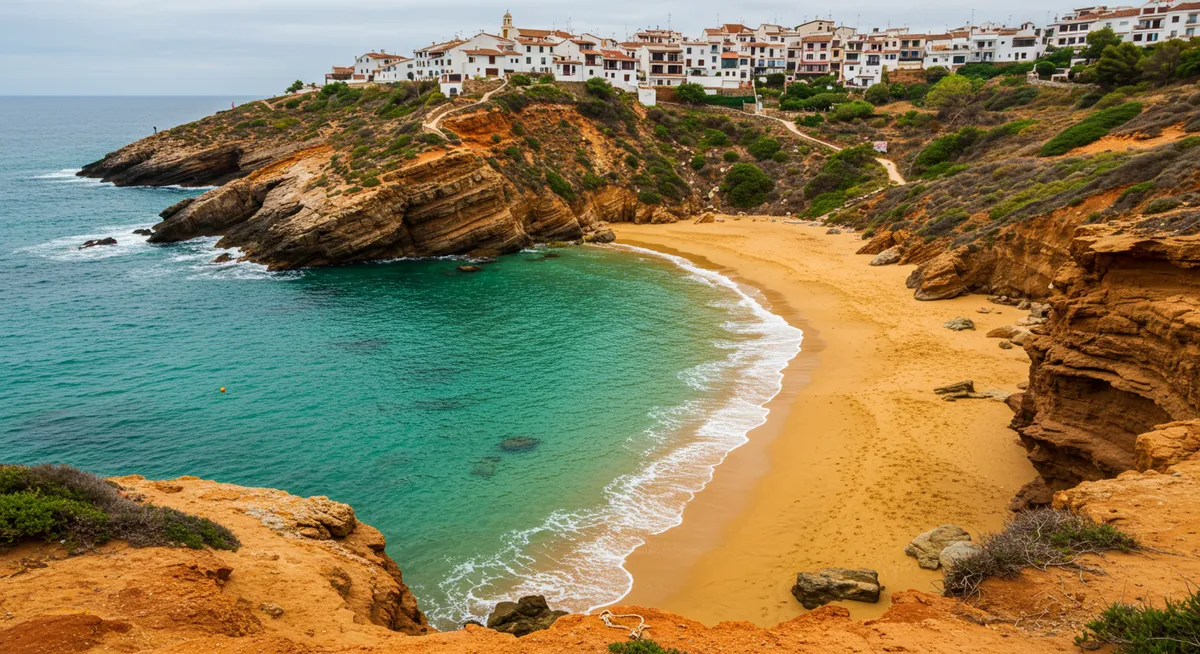
Coastal Spanish Villages Off the Tourist Trail
If you enjoyed Tellaro, you'll love these undiscovered coastal villages along Spain's Mediterranean coast.

Undiscovered Gems of the Balkans
Explore stone villages in Slovenia, Montenegro, and Albania that offer architectural beauty similar to Italy's medieval towns.
Explore More Hidden Gem Towns
Discover more enchanting under-the-radar destinations across Europe and beyond.